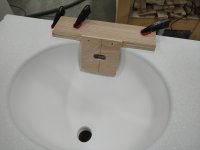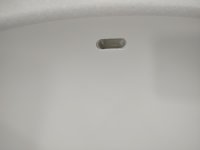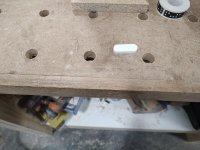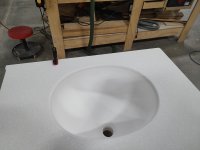- Joined
- Oct 16, 2015
- Messages
- 5,559
We had a job where the customer wanted to no overflow in the sinks. Apparently it is possible to buy these particular sinks that way, but this detail came up way to late in the process. Not only did we already have the sinks, they were installed. (undermount integral)
The only acceptable fix is to fill the holes. I got out the Origin to make a jig, enlarging the holes, and making them uniform. Then again with the Plate to make the plugs.
For whatever crazy reason, the sinks are not the same "white" as any of the other sheet stock. The "test" unit was done with the closest white. It is close, but not perfect. Hopefully we can get some of the sample pieces of the correct color.
The only acceptable fix is to fill the holes. I got out the Origin to make a jig, enlarging the holes, and making them uniform. Then again with the Plate to make the plugs.
For whatever crazy reason, the sinks are not the same "white" as any of the other sheet stock. The "test" unit was done with the closest white. It is close, but not perfect. Hopefully we can get some of the sample pieces of the correct color.




